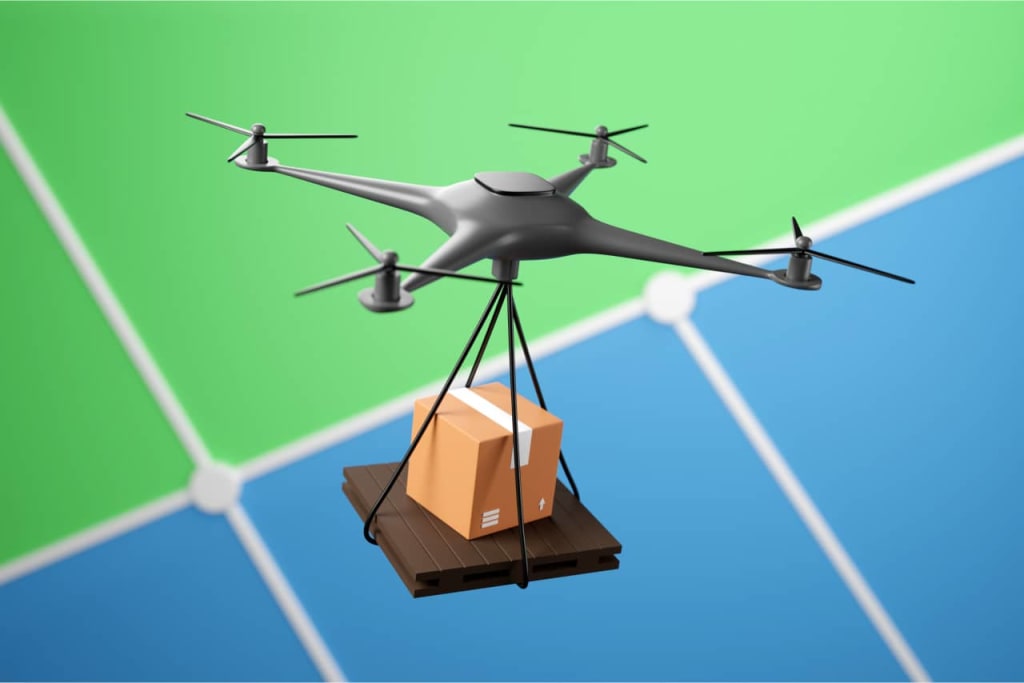The Future of Cargo Shipping Drones: Sky's the Limit
As we stand on the precipice of a technological revolution, cargo shipping drones are rapidly emerging as a viable alternative to traditional delivery methods.

Introduction to a technological revolution
With advancements in battery capabilities, payload capacities, and navigational systems, drones have the potential to become a game-changer in the industry.
The Historical Context
For years, the shipping industry has relied on traditional forms of transport, such as sea, air, and roadways. The increasing complexity and demands of modern-day shipping have created bottlenecks, leading to inefficiencies. Drones offer a way to bypass these issues, bringing flexibility and immediacy to the field.
Increasing Range and Payload
Just a few years ago, drones could barely lift packages weighing a couple of kilograms and were restricted to flying short distances. However, technological advancements, including improvements in battery technology and advanced aerodynamics, have boosted cargo drones' payload capacities significantly. The latest models can carry up to 100 kilograms and fly more than 100 miles without recharging. Major corporations like Amazon, UPS, and DHL have begun pilot programmes to explore the possibilities of drone shipments.
Last-mile Delivery: Where Drones Shine
The concept of 'last-mile delivery'—the final stage of the delivery process from a local distribution centre to the end-user—has always been a logistical challenge. Companies like Zipline are pioneering drone-based delivery systems that supply critical medical essentials in hard-to-reach regions, like rural Rwanda and Ghana. Besides humanitarian projects, commercial trials are underway in countries like the United States, the UK, and Australia, aiming to assess the efficacy of drones for daily deliveries.
Regulation Challenges and Compliance
The road to widespread drone adoption is fraught with regulatory hurdles. Airspace, particularly in urban settings, is stringently regulated to guarantee public safety. Added to this is the issue of drone traffic management—how to efficiently coordinate drone routes in busy skies. Regulatory bodies across the world are in the process of devising frameworks to ensure drone operations meet safety and efficiency standards. Businesses aspiring to utilise drones need to comply with these regulations, which are ever-changing and differ from jurisdiction to jurisdiction.
The Role of Artificial Intelligence (AI)
Automation is not the final frontier for drones; Artificial Intelligence (AI) is taking them to the next level. With AI, drones can now make real-time decisions, navigate complex routes, avoid obstacles, and even identify suitable locations for drop-offs or pick-ups. These intelligent features drastically reduce the need for human intervention and improve the reliability and efficiency of drone operations.
Energy-Efficient and Sustainable
The carbon footprint of traditional shipping methods can be high. Drones offer an eco-friendly alternative, particularly when powered by renewable energy sources. As sustainability becomes a focus in logistics, drones could be key to greening the supply chain.
Global Telecoms and the Role of Drones
The telecommunications industry is becoming increasingly interested in the advantages of drone technology. One of the key areas where drones can offer tremendous value is in network maintenance and rapid restoration, especially during or after natural disasters. When hurricanes, earthquakes, or other catastrophic events bring down traditional communication infrastructure, drones can be deployed swiftly to restore critical network capabilities. These airborne devices can carry lightweight, temporary communication equipment to hard-to-reach places, acting as makeshift mobile towers and thereby restoring connectivity in impacted areas.
Moreover, telecom companies are eyeing drones for routine network monitoring and maintenance. The use of drones equipped with advanced sensors can help in real-time data collection and analysis of network performance. This is particularly useful for monitoring remote or challenging terrains, where traditional data collection methods can be expensive or risky. By using drones, telecom companies can obtain a real-time, comprehensive view of their network performance, facilitating quicker identification of issues and more efficient solutions.
Looking Ahead with Uproot Technologies
As an industry leader with over 40 years of experience specialising in IT infrastructure and logistics, Uproot Technologies is committed to keeping an eye on technologies that could shape the future. With cargo shipping drones leading the charge, the sky is truly the limit for what can be achieved in the logistics sector.





Comments
David Chan is not accepting comments at the moment
Want to show your support? Send them a one-off tip.